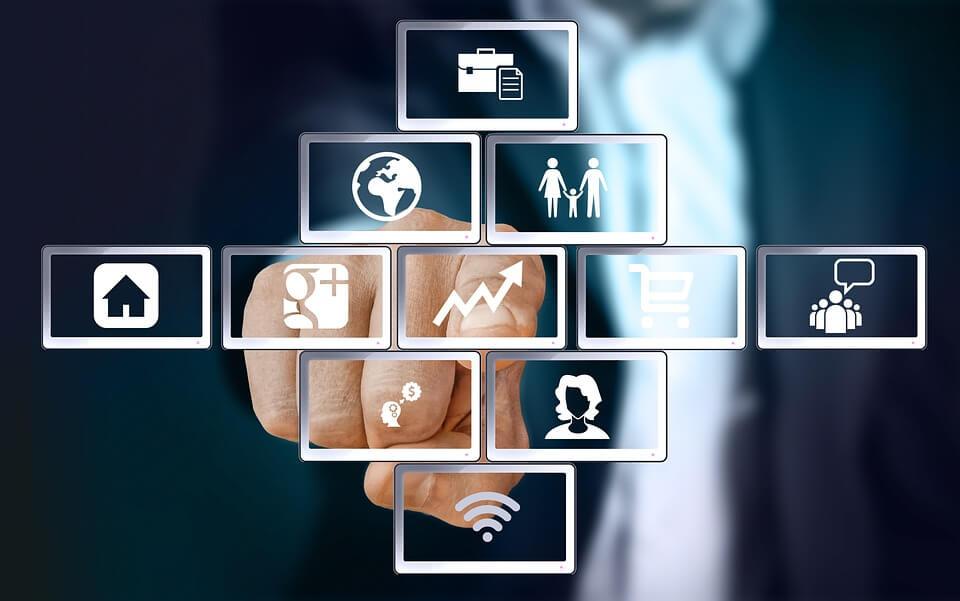
Technology
Finding new and better ways to produce commodities is referred to as technological development. It describes the procedure used to convert inputs into outputs. Technology advancements boost the productivity of labor, capital, and other production elements.
A technological transition, on the other hand, includes the creation of new technologies, their open-source release through research and development, their ongoing refinement, and their widespread adoption in a sector of the economy or society.
Artificial intelligence and Quantum computing, ideas that seemed so far-fetched in the past, are today’s reality.
Global security capabilities are changing due to technological advancements, from improving border monitoring to lessening the effects of natural disasters.
Here are five ways these developments are reducing security risks:
The Internet of Things ( IoT )
The term “Internet of Things” (IoT) refers to a network of physical items that can connect to and share data with other systems and devices through the internet because they have sensors, software, and other technologies built into them.
The use of IoT technology is accelerating across many industries, including public safety. For example, to locate people in danger and offer security to police officers at a crime scene, IP addressable sensors or IoT-enabled trackers can be used.
These tools are economical and provide more information throughout investigation operations.
More Data = More Transparency
As web-connected technology spreads, the variety of alternatives for using technology is expected to grow. As a result, authorities must prioritize information processing and be more transparent with the public.
Furthermore, there have been advancements in the field of education as well. Some of the best counter terrorism schools offer courses on cybercrime, advanced counter-terrorism, advanced intelligence collection, etc.
A degree program in counter-terrorism has numerous goals. Graduates should thoroughly understand the various terrorist groups, including their goals, threats, strategies, and other security elements.
Second, they must be capable of independently carrying out fundamental counter-terrorism and counterintelligence activities. Third, they should be competent in developing and implementing plans for acquiring intelligence.
Artificial Intelligence
Law enforcement officials find it laborious to gather and analyze huge volumes of data manually; they can use artificial intelligence technologies to automate the entire procedure rather than doing it manually.
Artificial intelligence can lessen errors and automatically evaluate vast amounts of data. According to Premium Times, AI has helped the police in 70% of cases and saved around 2,000 hours of manual labor.
It allows public safety technology to perceive, examine, and take appropriate action. In this sense, AI-powered technology has never been more beneficial for police personnel.
Furthermore, AI can also be used to interpret satellite images. Before AI, analysts would take hours going through the satellite images. However, artificial intelligence can now autonomously scan locations and provide rescue teams with real-time updates on the positions.
Moreover, AI satellite imagery can also be used for monitoring border security. With the advancements in drones, sensors, and AI borders are no longer just physical boundaries; they are now digital walls.
Automated video monitoring
Artificial intelligence for video monitoring uses computer software algorithms that analyze the sounds and pictures from security cameras. A particular object captured in the cameras may be compared to hundreds of reference pictures by considering height, size, colors, movements, or other characteristics.
Artificial Intelligence then evaluates whether the object resembles any of the reference photographs.
The results of all the various questions are combined to give that object a score, which the AI uses to determine if it satisfies the required selection criteria.
One benefit of AI for video surveillance is increased efficiency. In the past, individuals have seen video surveillance images in the control rooms. In addition to the fact that it is difficult for individuals to focus for extended periods, watching numerous cameras at once is labor-intensive and useless.
This is paired with the human incapacity to identify noteworthy occurrences following extended video watching.
AI is required to fill the gap, turning CCTV systems from passive to active observers. Millions of AI-operated cameras have been installed in nations like the United States and China, which dominate the market for AI-based surveillance.
At least 75 of the 176 nations in the world actively employ AI-based surveillance technology, according to the AIGS (Artificial Intelligence Global Surveillance) index.
Cloud-Based Data storage
Every day, agencies gather vast volumes of digital evidence. In the past, this data was stored in local storage devices, such as floppy disks, hard drives, magnetic strips, etc. These data storage methods offer a limited capacity and are not a feasible option in today’s world.
Flexible storage options can safely store data while also providing additional advantages. However, cloud-based data storage is perhaps best for security and many other benefits, such as global scalability and data backup.
The requirements to purchase, administer, and maintain internal storage infrastructure is removed when data is stored on the cloud. This offers enterprise-level security, as opposed to hardware in your workplace.
Furthermore, the chances of data loss are almost non-existent. The data is backed on multiple servers; therefore, even if it is corrupted on one server, the original copy is available on another. This is a critical factor for public and commercial security agencies.
Conclusion
We must be open to new concepts and technology and take advantage of recent developments from other industries to meet the problems that the commercial and public security sectors confront as threats increase.
Although there is no magic solution to our problems, we may increase security and make the process less unpleasant using innovative concepts and technology.





